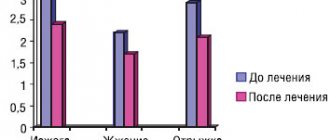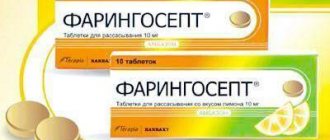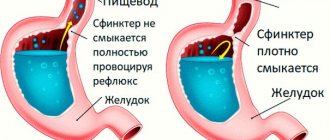Sodium alginate in the classification of food additives goes under the name E401 and is a salt of alginic acid. It is supplied for sale in the form of a powder, the color of which can vary depending on the characteristics of the raw material from cream to light brown.
The composition is highly soluble in water, which, together with its beneficial qualities for the skin, has found wide application in the cosmetic field. Experts offer people with problem skin masks based on it to restore energy balance.
The high popularity of the product is due to the fact that such preparations perfectly retain moisture, having a stabilizing and gelling effect. Technologists from the food industry also highly appreciated the mixture’s abilities and adopted it.
Properties of sodium alginate
A widely used powder is obtained from brown or red algae. They grow in abundance in the maritime parts of Indonesia and the Philippines. At the same time, production facilities for their processing are located mostly in China, Japan, France and America. Moreover, in Asian countries, the use of the concentrate is most often associated with the beauty industry, since the demand for alginate products there has remained simply incredible for the last five years.
Content:
- Properties of sodium alginate
- Use in the food industry
- To the delight of cosmetologists
- Medical research
The world has learned about the beneficial qualities of algae components for quite a long time. The history, if we omit the mention in antiquity, when plants were used by healers, goes back to the seventies of the last century. It was then that scientists tried to find a safe compound that would take on the responsibility of removing radionuclides and heavy metal salts from the tissues of internal organs.
Brown algae were taken as the basis for laboratory tests. After conducting a series of tests, the employees responsible for the experiment came to the conclusion that at that time it was hardly possible to find something more effective in counteracting the effects of radiation exposure than sodium-based alginate.
Much later, when people became interested in the chemical and energy composition of supplements, additional testing was carried out. Their reviews confirmed that the presented concentrate as a food additive does not pose a significant threat to human health.
The only warning here was following a strict daily dosage. It is not worth exceeding the calculation according to the principle: 50 mg of a substance per 1 kg of weight for reasons of personal safety.
Harm, contraindications, side effects
Sodium alginate as a food additive is approved in Russia and in all countries of the world. In food products, it performs its function when added in minimal quantities, so its content there is extremely low. In this regard, there is no restriction on the concentration of E401 in food in regulatory legal acts. Once in the body, it is broken down into sodium and alginic acid, which is excreted unchanged without causing harm to health.
The only contraindication to taking sodium alginate is individual intolerance, which is expressed in allergic reactions (rash, coughing, sneezing). There are no side effects; drug manufacturers indicate that if dosages are not observed, allergies may occur.
Use in the food industry
Despite the fact that alginate can be purchased freely at a pharmacy for anti-aging procedures, it is used in the food industry on a much larger scale.
The most important mission assigned to the mixture is considered to be the function of a thickener, which was made possible thanks to the gel-forming structure. You can find mention of E401 on the labels of the following products:
- canned mushrooms;
- canned vegetables;
- processed cheese;
- sauces;
- canned meat;
- sweets like ice cream or multi-ingredient desserts;
- bakery products.
Sometimes even a standard recipe for making cheese at home cannot do without this natural additive.
Also, with the help of E401, technologists clarify juices or make soft drinks cloudy. It is unlikely that any analogue of completely synthetic origin can boast of such high effectiveness, provided that it is almost zero harmful.
To the delight of cosmetologists
Due to several special properties, the additive has now become practically the best friend of cosmetology center workers. The instructions for a cream with an anti-aging or moisture-retaining spectrum of action will most likely contain exactly this main ingredient.
Even if you simply make a mask at home, mixing the proportions correctly, after just a few procedures you will be able to achieve a visible effect. This happens due to the following features of the effect on the skin:
- activation of the protective barrier;
- regulation of water balance;
- moisture retention;
- toning;
- anti-stress therapy;
- strengthening collagen fibers;
- regulation of metabolism;
- stabilization of the sebaceous glands;
- increasing the tone of the subcutaneous layer.
It is most convenient to use all the beneficial qualities of the product as a mask. Moreover, it does not matter at all what type of skin the client has. Even people with signs of aging skin are allowed to use this type of therapy to freeze the loss of beauty. But most often they are prescribed to teenagers or simply people who have suffered for years due to problem skin without the opportunity to choose competent care on an ongoing basis.
Best materials of the month
- Coronaviruses: SARS-CoV-2 (COVID-19)
- Antibiotics for the prevention and treatment of COVID-19: how effective are they?
- The most common "office" diseases
- Does vodka kill coronavirus?
- How to stay alive on our roads?
You can purchase the powder in pharmacy chains without a prescription or in specialized stores. It is best to dilute it with a special serum solvent. But if you don’t have such a liquid at hand, then even just warm water will do.
Next, you need to apply the mixture in an even layer in the place that most needs restoration. Immediately after application, an airtight film is formed on the area, which is designed to fix the contours of the face or body, depending on the selected treatment area.
As soon as the set time is up, the film can be removed. As a result, the consumer receives a pronounced lifting effect. This happens due to the fact that many skin irregularities are smoothed out. The effect works even in cases where you need to get rid of wrinkles on the neck, forehead or nasolabial fold.
Cosmetologists also value sodium alginate for its ability to structure a liquid solution, adding the viscosity necessary for a specific procedure. The slightly viscous consistency is ideal for the formation of irreversible gels. This property is used to create products in the household chemicals category, such as the production of shampoos, ready-made creams and soap solutions for intimate hygiene.
Antacids
Antacids neutralize the effect of hydrochloric acid in gastric juice. The abundance of dosage forms (tablets, lozenges, oral suspension in a bottle, oral suspension in bags, solutions, powders, gels), pleasant taste and almost complete absence of side effects with occasional use allows this group of drugs to retain one of the important positions in the treatment of acid-related diseases.
NB!
Antacids do not eliminate the cause of heartburn, but they temporarily relieve the discomfort! It is important to convey this to buyers, because only an integrated approach to treating the underlying disease can help get rid of unpleasant symptoms for a long time.
All antacid drugs are divided into absorbable and non-absorbable. Absorbed antacids can have systemic effects, while non-absorbable antacids act primarily in the gastrointestinal tract. This division of antacids is quite arbitrary and is based on the degree of absorption, so some drugs (for example, calcium carbonate and magnesium oxide) are included by different authors in different groups.
Absorbable include :
- sodium bicarbonate (soda - NaHCO3);
- magnesium oxide (burnt magnesia);
- basic magnesium carbonate - a mixture of Mg(OH)2, 4MgCO3, H2O;
- main calcium carbonate - CaCO3;
- mixture - sodium sulfate, sodium phosphate, sodium bicarbonate;
- mixture: calcium carbonate + magnesium carbonate.
Products from this group are almost always present in pharmacy display cases, but they have a limited scope of application and are rarely prescribed by doctors. By entering into a neutralization reaction with hydrochloric acid, they give a very quick but short-lived effect, and the resulting carbon dioxide causes belching and bloating, which precludes their use for GERD. Also, taking absorbable antacids can lead to a secondary increase in the secretion of hydrochloric acid (the “rebound” phenomenon). In this regard, absorbable antacids have practically lost their clinical significance and are used mainly for self-medication. Antacid drugs from this list can be taken occasionally and once, since with long-term use they cause exacerbation and progression of diseases of the digestive tract, such as stomach ulcers.
A homemade antacid - soda - has a negative effect on water-salt metabolism, therefore, with intensive treatment, edema may appear, blood pressure may increase, and signs of heart failure may increase, which limits its use in patients with concomitant pathologies of the cardiovascular system, kidney diseases and in old age .
The group of non-absorbable antacids includes primarily aluminum and magnesium preparations .
- 1st generation - aluminum salts of phosphoric acid - used limitedly due to the possible development of serious side effects;
- 2nd generation - aluminum-magnesium antacids - the most frequently prescribed drugs from the group of non-absorbable antacids, due to the combination of magnesium and aluminum salts, they have a more pronounced antacid effect and better tolerability;
- 3rd generation - aluminum-magnesium preparations with other components , prescribed in cases where a carminative or analgesic effect is additionally required.
The main mechanism of action is associated with the adsorption of hydrochloric acid, so their effect develops more slowly than that of absorbed drugs, but lasts longer - 2.5–3 hours. They are superior to absorbed antacids in neutralizing capacity. Non-absorbable antacids have additional beneficial properties:
- can adsorb pepsin, reducing the proteolytic activity of gastric juice, preventing further destruction of the mucosa;
- bind bile acids that have a damaging effect on the gastric mucosa;
- have a pronounced enveloping effect, thereby protecting the mucous membrane and promoting better regeneration.
Aluminum-containing antacids can cause serious complications when used over a long period of time or when taken in high doses. In the small intestine, they form aluminum phosphate salts, due to which the absorption of phosphates is impaired and hypophosphatemia develops, manifested by malaise and muscle weakness. Severe phosphate deficiency causes osteomalacia and osteoporosis. Aluminum can interfere with bone mineralization, causing toxic effects on osteoblasts. Hypophosphatemia, in turn, promotes increased calcium absorption, the development of hypercalcemia, hypercalciuria and the formation of calcium stones. The accumulation of aluminum in the glomerular membranes of the kidneys can cause the development of renal failure or its aggravation. In this regard, it is undesirable to use aluminum-containing antacids in elderly patients, children, and pregnant women. Aluminum salts contribute to the development of constipation, and magnesium compounds weaken. In modern antacids, the ratio of aluminum hydroxide and magnesium hydroxide is well balanced, which helps to avoid bowel dysfunction.
Today, combined antacids with two or more active ingredients are most widely used. This allows you to vary the speed of onset of the therapeutic effect and duration of action, as well as reduce the number of side effects and improve tolerability.
Medical research
The fact that in most countries it is used after numerous tests for safety, quality and latent risks to the body speaks in favor of the safety of the product. An additional advantage here is the absence of allergenic properties, which a good half of other food additives cannot boast of.
Even if it gets on the mucous membrane, there will be no negative consequences for the victim. The only relative disadvantage here is the ability of alginate to reduce the absorption of beneficial microelements in the intestine. This leads to a deficiency of minerals, which contributes to malfunctions of the digestive tract. To avoid this, it is enough to adhere to the daily norm and adhere to the principles of a healthy lifestyle.
More fresh and relevant information about health on our Telegram channel. Subscribe: https://t.me/foodandhealthru
We will be grateful if you use the buttons:
Alginate instructions for use. Sodium alginate
Russian name
Sodium alginate
Latin name of the substance: Sodium alginate
Natrii alginas (genus Natrii alginatis)
Pharmacological group of the substance Sodium alginate
- Coagulants (including blood clotting factors), hemostatics
Nosological classification (ICD-10)
CAS code
9005-38-3
Characteristics of the substance Sodium alginate
Alginic acid derivative. A natural polysaccharide obtained from brown seaweed.
Pharmacology
Pharmacological action - reparative, hemostatic, local anti-inflammatory.
When applied locally, it effectively helps stop bleeding, eliminate inflammation and accelerate healing processes, incl. for diseases of the gastrointestinal tract, including the anorectal area. A decrease in signs of inflammation is noted on the 7th day of treatment. On the 14th day, signs of inflammation usually disappear, and an improvement in the peripheral blood picture is noted (increased levels of hemoglobin, red blood cells and a decrease in the number of leukocytes, decreased ESR).
Application of the substance Sodium alginate
Anal fissures, proctosigmoiditis, colitis, bleeding and inflammation after colorectal interventions, chronic bleeding hemorrhoids, acute intestinal diseases with damage to the colon (such as enterocolitis, hemocolitis, salmonellosis, dysentery).
Contraindications
Hypersensitivity.
Side effects of the substance Sodium alginate
Allergic reactions.
Routes of administration
Rectally.









